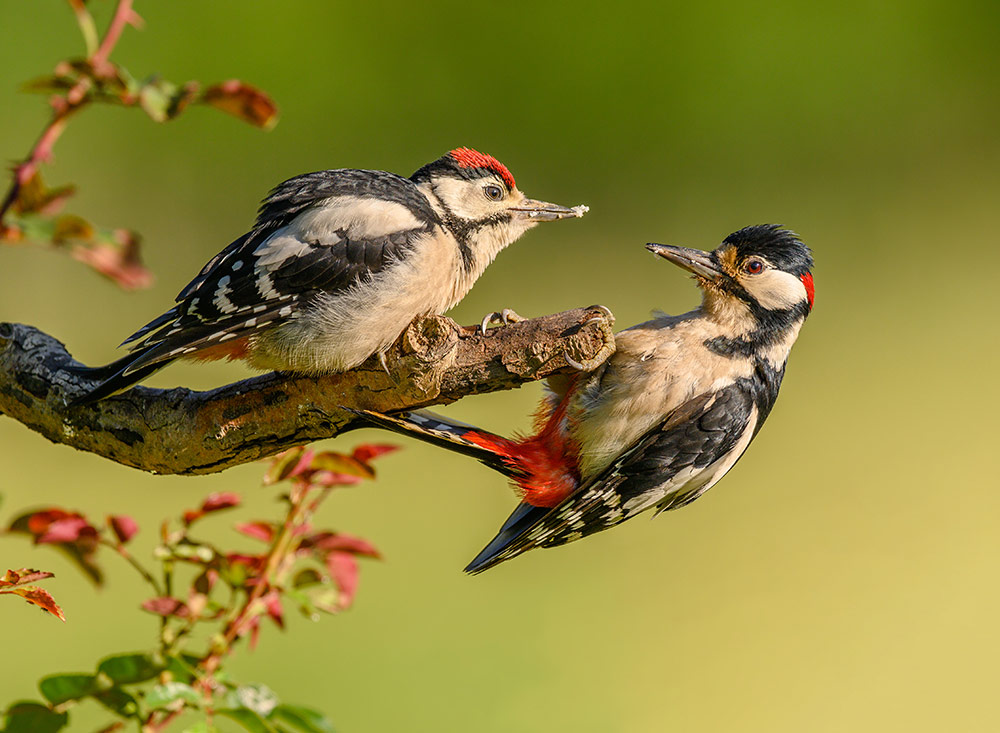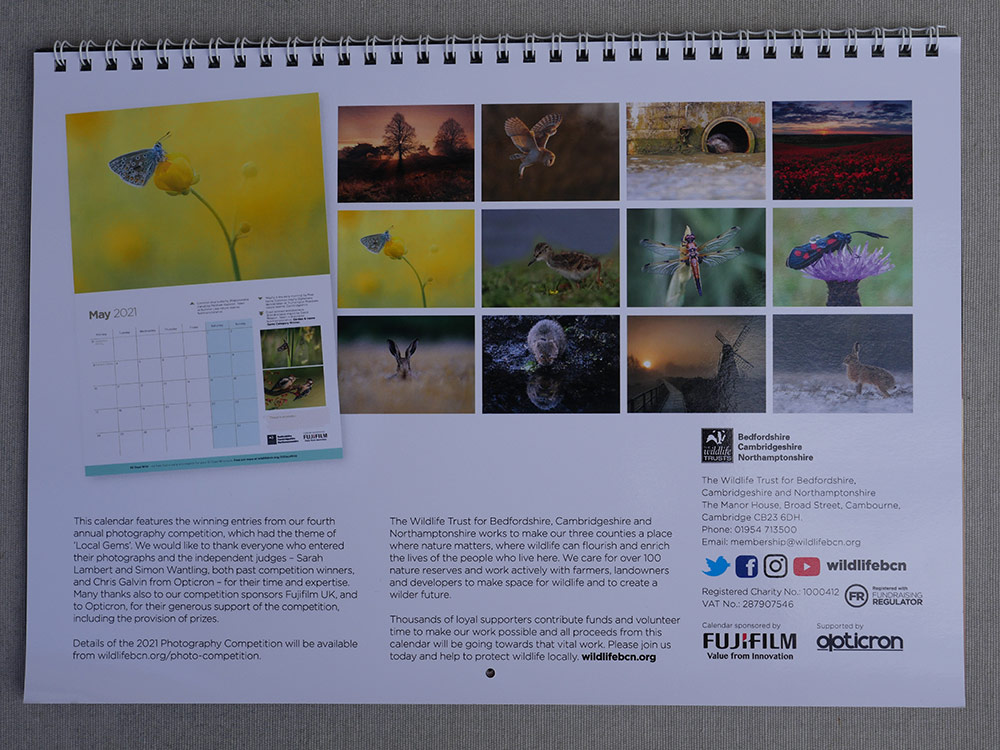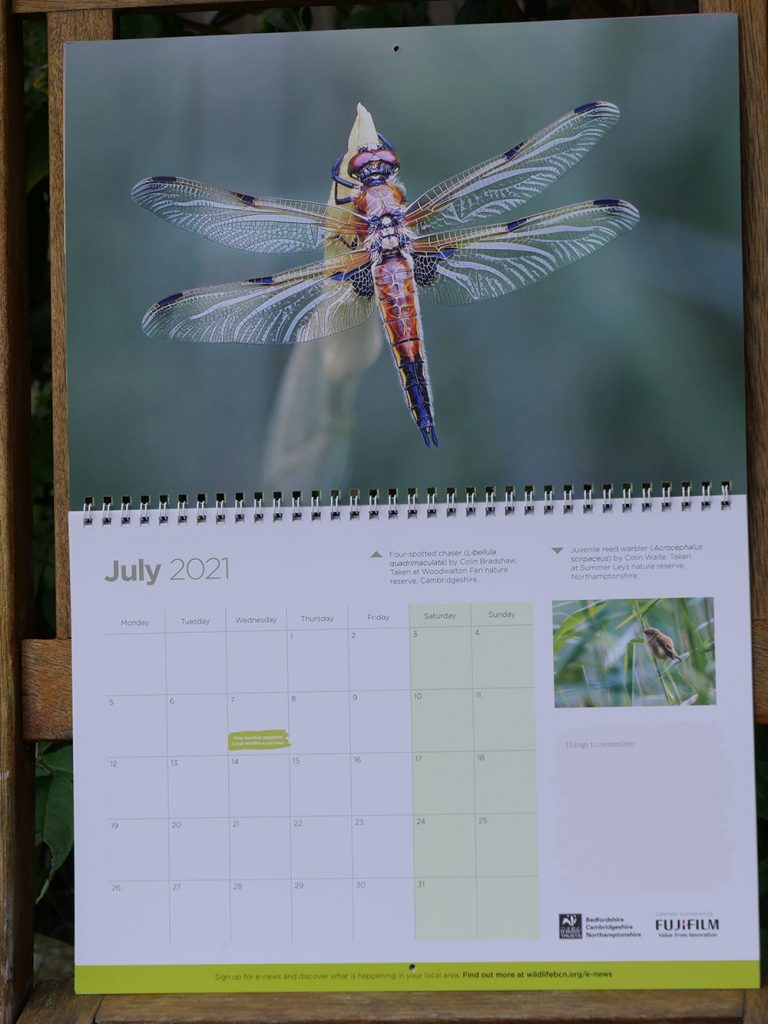As autumn yields to winter and the days are drawing in, this can be a very special time to be outdoors, experiencing deep connections to nature and switching off from everyday life. Mornings have a spectral mistiness, and towards evening on a clear day, dusk can take on exquisite translucent tinges of copper and turquoise. Cambridgeshire is blessed with ancient woodlands which hold a special magic and can provide a place for retreat and reflection; the Wildlife Trust cares for several magnificent woodland nature reserves, from the majesty of Hayley Wood and Gamlingay Wood, both near Cambridge, to Lady’s Wood at Upwood, all rich with native species.

Forest bathing, or shinrin-yoku, has become increasingly popular as outdoor therapy in the West in recent years, a sort of guided mindfulness training involving trees. This activity originated in Japan in the 1980s, and the therapy first took root after research showed it to have proven health benefits. Scientists from Japan’s Chiba University conducted a study from 2004 to 2012 and found that exposure to forests can boost the immune system, due to the essential oils (phytoncides) that trees emit as part of their own protection from germs and insects. Breathing in forest air doesn’t just feel good, it actually is good for us too, as it boosts the immune system. Scientists have found that even as little as fifteen minutes spent among trees per day resulted in lower levels of cortisol, lower blood pressure and a lower pulse rate; essentially forest environments help people relax and reduce stress levels.

One study found that forests promote ‘lower concentrations of cortisol, lower pulse rate, lower blood pressure, greater parasympathetic nerve activity and lower sympathetic nerve activity than do city environments’. Another found significantly decreased levels of hostility and depression among subjects who spent a regular amount of time in forests.

Quiet woodland reflection will reward with an experience that massages the senses, with the light performing magical tricks – sending shafts down through the gaps in the canopy, illuminating green lichen on bark, forming pools of yellow on the ground, and highlighting clouds of insects dancing in the air.

Woods to visit
www.wildlifebcn.org/nature-reserves/ladys-wood
www.wildlifebcn.org/nature-reserves/hayley-wood
www.wildlifebcn.org/nature-reserves/gamlingay-wood
Designer dormouse des-res
Slumbering away in some of Cambridgeshire’s woodlands are hazel dormice – and the lucky dormice of the county are in safe hands, having had plenty of custom-made boxes to call home in the last couple of years, thanks to Wildlife Trust staff and volunteers. When it comes to hibernation, a safe, cosy tucked-away environment for autumn through winter is de rigueur, and dormice customise and cosify their boxes with leaves, moss, grasses, stripped honeysuckle bark, and fresh hazel leaves to cosy up all winter long.
When the Wildlife Trust asked for help, eager groups signed up to make more of the boxes, among them students at Swavesey Village College. Construction tutor at the college, David Mackintosh, said, ‘We had a group of students making the boxes during our Experience Week, and it proved such a success that we have now written it into the Year 9 construction students’ curriculum.’

Dormouse boxes provide a safe shelter for this hugely popular protected species and other small mammals, particularly for breeding through the spring and summer, and they present the Trust’s Monitoring and Research team with a great way to keep an eye on the population – and therefore the health of the woodland they live in. They keep boxes clean and in good condition, to encourage dormice and to reduce the chances of parasites or disease. Every winter, staff and volunteers clean out old boxes and replace those that have seen better days, such as those damaged by squirrels, and the Trust now has the capacity to replace 100-200 boxes a year with brand new ones. As hibernation approaches, the dormice will all tuck themselves away for winter, falling into a torpor until April or May.
Dormice are now strictly protected by law (you need a licence to handle them). Numbers have declined over the last 100 years, with threats increasing over the past couple of decades due to loss of the right type of woodland habitat for them, and potentially climate change. They live in deciduous woodland, hedgerows and dense scrub, and spend most of the spring and summer up in the branches, rarely coming down to the ground. They eat buds, hazelnuts, berries and insects, and in their cosy nests the female will give birth to up to seven young.

Male Dormouse in Brampton Wood by Henry Stanier 
Dormouse at Brampton Wood by Alistair Grant 
Dormouse by Henry Stanier
The Trust’s Brampton Wood (temporarily closed for annual contractor work) was the site of a dormouse reintroduction programme more than 20 years ago, and the population there are still thriving. A captivating and award-winning video by Cambridge PhD student Ellie Bladon explains more about this www.youtube.com/watch?v=Ce0_JfzRVxI
2021 Wildlife Calendar
The Trust’s 2020 photography competition drew record numbers of entries this year, and judging was held over the summer. This meant plenty of choice to create a stunning 2021 calendar – you can now order it via the Trust’s online shop www.wildlifebcn.org/shop (or if you happen to be in Northants, you can buy it at the Trust’s Nene Wetlands Visitor Centre at Rushden Lakes).











